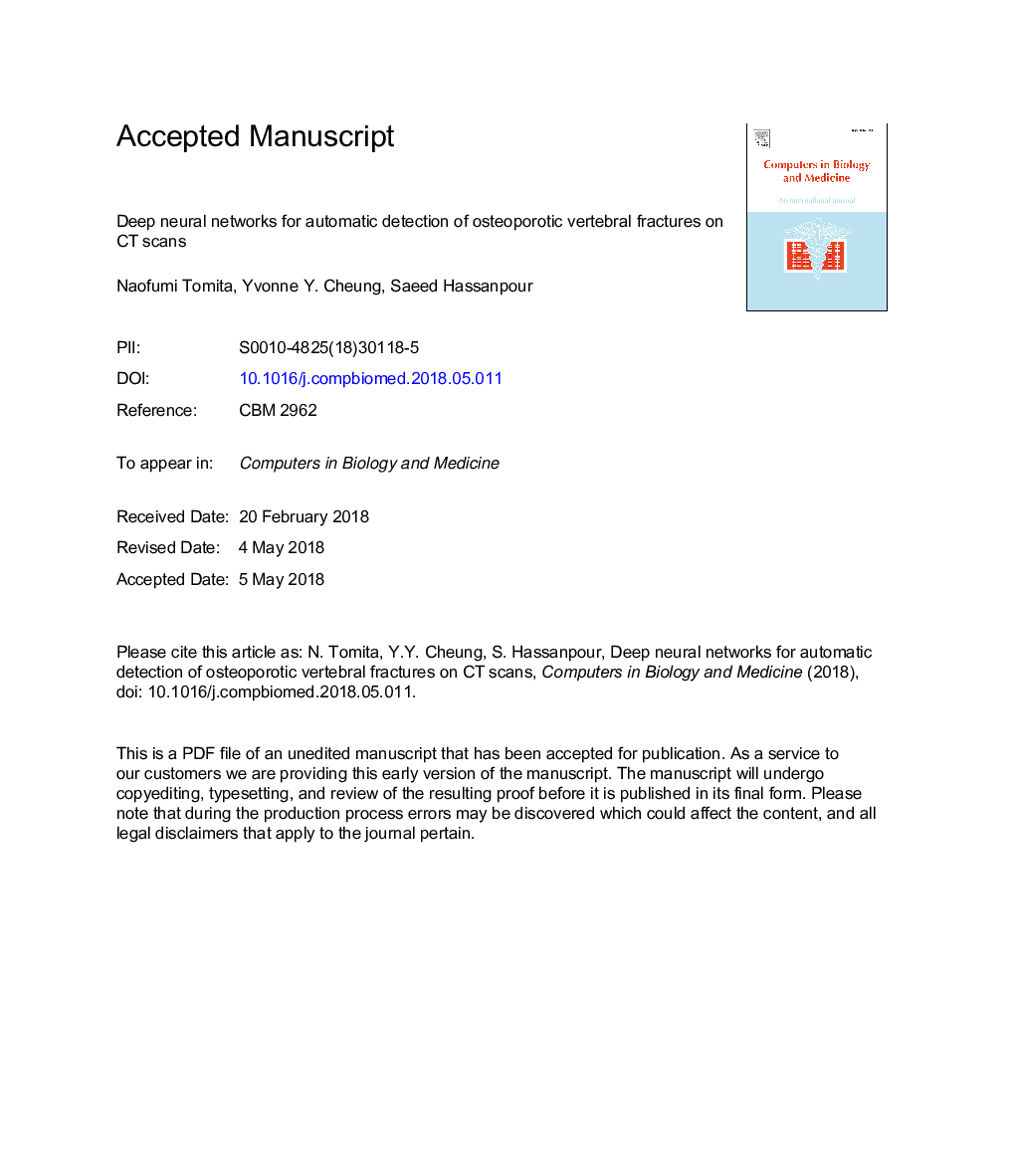| Article ID | Journal | Published Year | Pages | File Type |
|---|---|---|---|---|
| 6920483 | Computers in Biology and Medicine | 2018 | 19 Pages |
Abstract
Osteoporotic vertebral fractures (OVFs) are prevalent in older adults and are associated with substantial personal suffering and socio-economic burden. Early diagnosis and treatment of OVFs are critical to prevent further fractures and morbidity. However, OVFs are often under-diagnosed and under-reported in computed tomography (CT) exams as they can be asymptomatic at an early stage. In this paper, we present and evaluate an automatic system that can detect incidental OVFs in chest, abdomen, and pelvis CT examinations at the level of practicing radiologists. Our OVF detection system leverages a deep convolutional neural network (CNN) to extract radiological features from each slice in a CT scan. These extracted features are processed through a feature aggregation module to make the final diagnosis for the full CT scan. In this work, we explored different methods for this feature aggregation, including the use of a long short-term memory (LSTM) network. We trained and evaluated our system on 1432 CT scans, comprised of 10,546 two-dimensional (2D) images in sagittal view. Our system achieved an accuracy of 89.2% and an F1 score of 90.8% based on our evaluation on a held-out test set of 129 CT scans, which were established as reference standards through standard semiquantitative and quantitative methods. The results of our system matched the performance of practicing radiologists on this test set in real-world clinical circumstances. We expect the proposed system will assist and improve OVF diagnosis in clinical settings by pre-screening routine CT examinations and flagging suspicious cases prior to review by radiologists.
Keywords
Related Topics
Physical Sciences and Engineering
Computer Science
Computer Science Applications
Authors
Naofumi Tomita, Yvonne Y. Cheung, Saeed Hassanpour,
